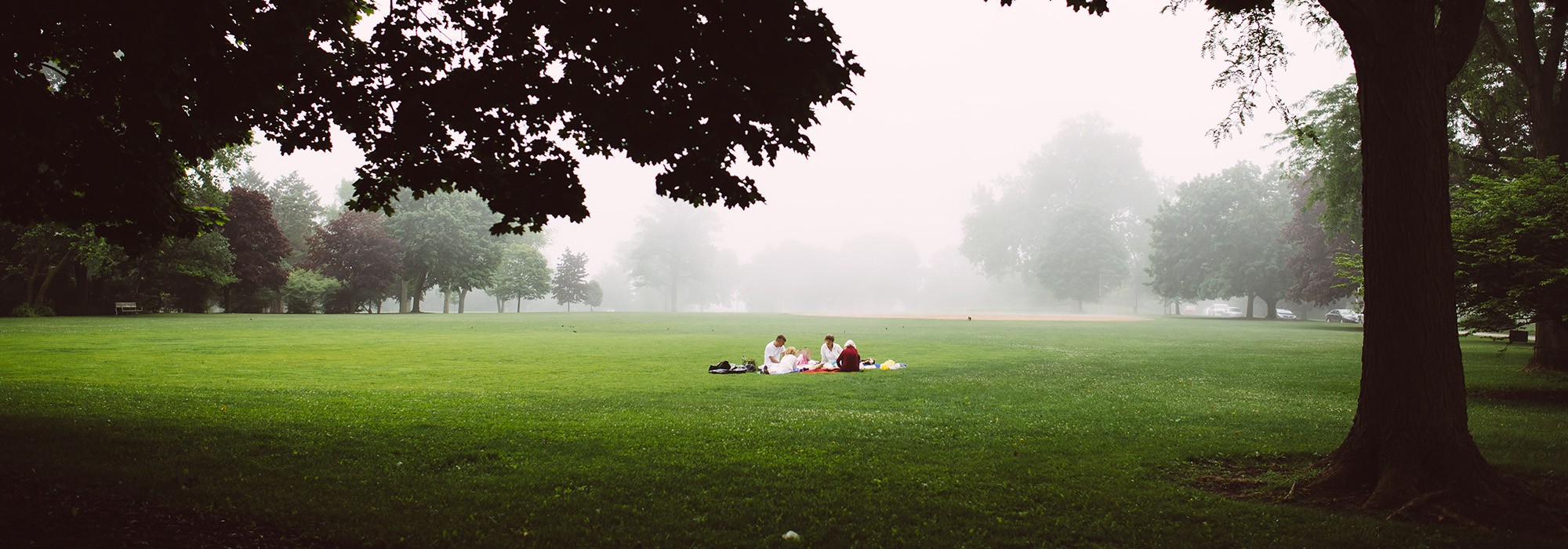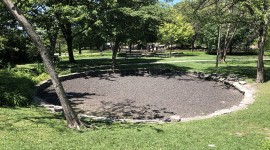Gillson Park and Wilmette Harbor Historic District Under Threat
Nestled between Michigan Avenue, Sheridan Road and Lake Michigan’s North Shore in Wilmette, Illinois, the 60-acre Gillson Park and Wilmette Harbor Historic District features expansive views of the lake, gently sloping topography, and curving drives and paths edged by lawns, shrubs, and historic trees. Recently the Wilmette Park District released a Request for Proposals (RFP) for road and sewer improvements that would have an impact on the National Register-designated historic district’s character defining drives.
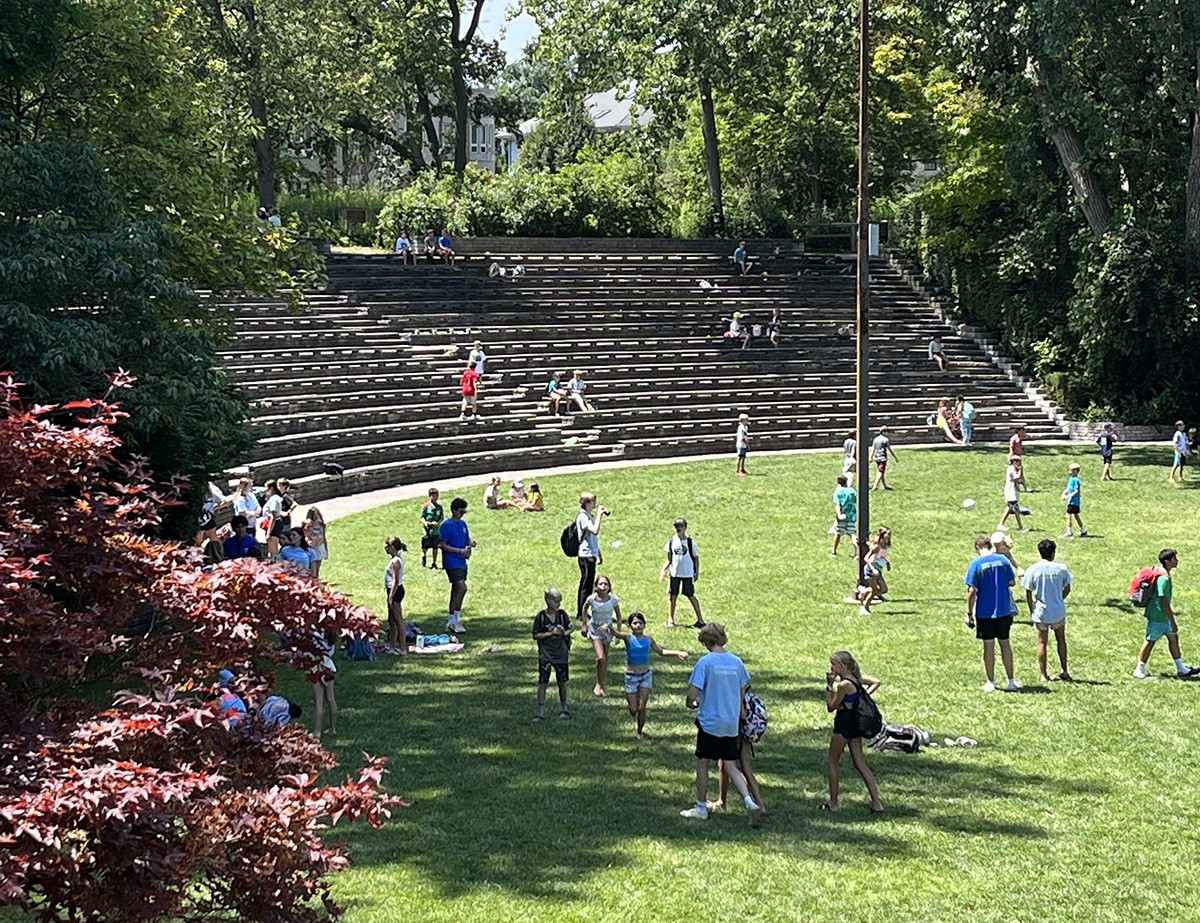
History
With the construction of the North Shore Channel from 1907-1911, which was created to improve sanitation and water quality for the region, the opportunity for a new lakefront park and harbor emerged. In 1911 the newly formed Wilmette Park District (WPD) acquired 22-acres of barren land filled with excavated fill and engaged landscape architect and nurseryman, Benjamin Gage. In ca. 1915 Gage prepared a plan for Washington Park (now Gillson Park), taking advantage of its lakefront location. The plan featured two entry drives, a kidney-shaped circuit drive, curvilinear paths, lawns, a playfield, naturalistic groupings of trees and shrubs, a promenade north of the harbor, and a beach for bathing. To enrich the fill material, which was largely heavy clay, Gage planted a succession of crops including peas, oats, millet, and rye, and then plowed the crops to enrich the soil. After three years of treatment the site was ready to be regraded and planted. Following Gage’s plan, laborers built a curvilinear circuit drive, created lawn areas, and installed trees and shrubs.
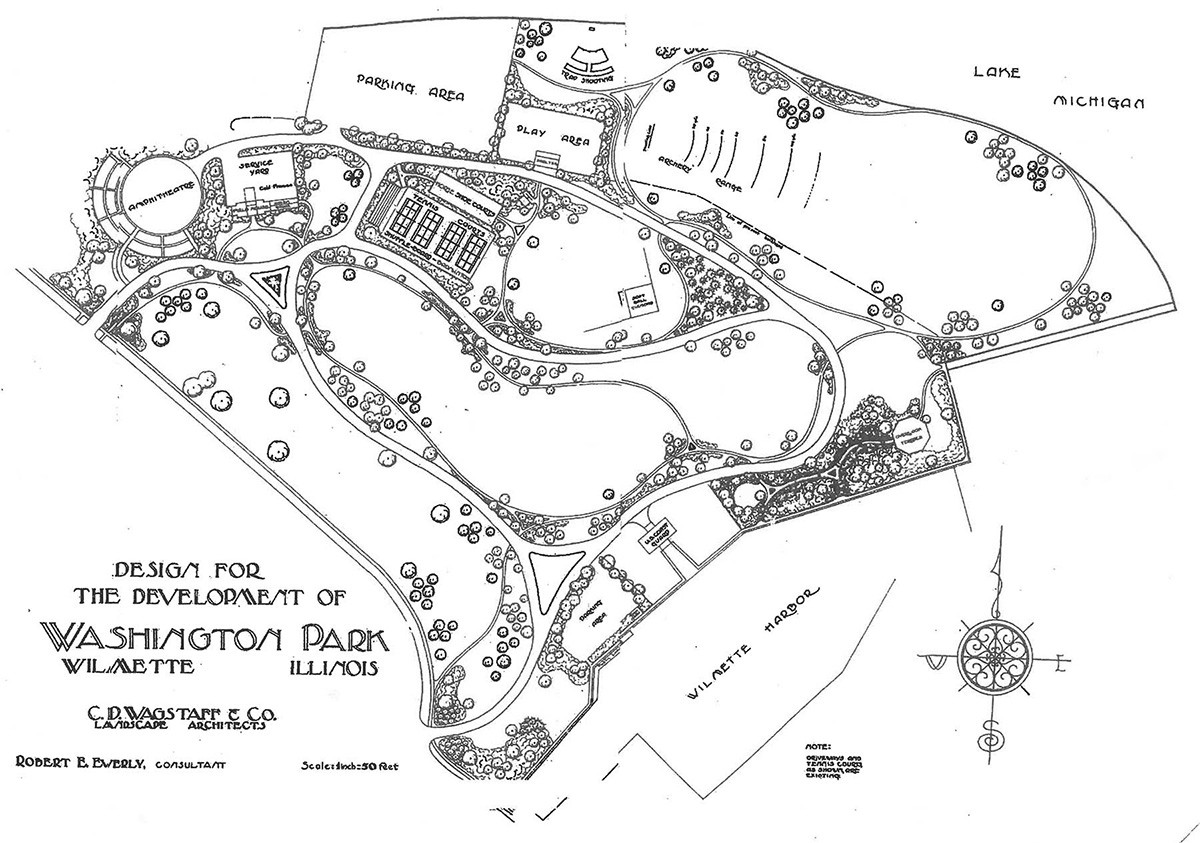
By the 1930s the WPD had substantially enlarged the park and in 1936 engaged landscape architect and Glencoe Park Superintendent, Robert Everly to “make a survey of the grounds and harbor” and to “make tentative plans and submit recommendations.” Everly collaborated on the project with his colleague, landscape architect Charles Wagstaff. Everly and Wagstaffs’ 1936 plan retained elements from Gage’s earlier scheme including the curvilinear circuit drive, lawn areas, and winding paths. The park had incrementally expanded to the north and the east and plans to dredge and improve the harbor would also provide approximately ten more acres of fill. The plan anticipated the harbor improvements and extended the existing roadway system onto this new landfill, creating Harbor Drive and a beachfront drive with parking spaces (now Overlook Drive). The landscape architects proposed additional recreational features, an expansive amphitheater nestled into a bluff overlooking Lake Michigan, and an expanded boat harbor. Inspired by landscape architect Jens Jensen (with whom Everly had previously worked) and his Prairie Style that by this time could be seen in many nearby parks and private estates, the Everly/ Wagstaff plan included native plant materials and horizontal layers of stonework deployed in council rings, retaining walls, steps, and a terraced seating area.
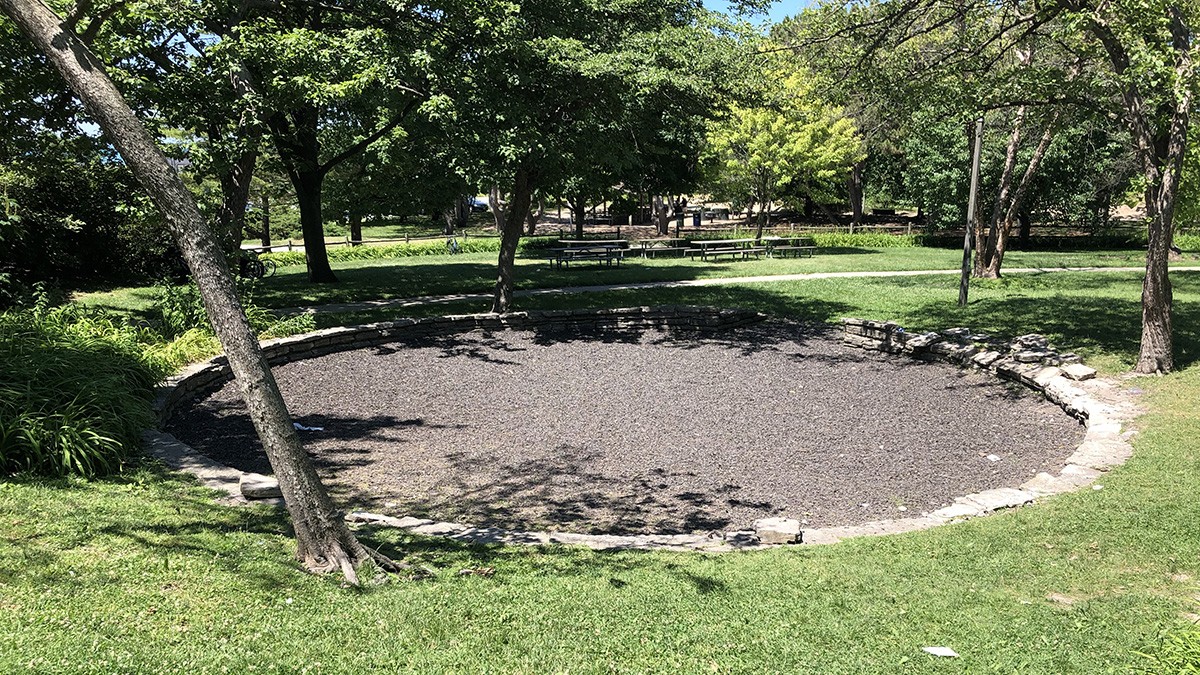
During the latter part of the twentieth century and into the 21st century incremental changes to the park were small and limited. In the early 2000s a commemorative garden was planted to honor the victims of the tragic events of September 11, and in 2016 volunteers, led by a design by the landscape architectural firm Living Habitats, planted native trees, shrubs, and perennial, providing habitat for resident and migratory birds.
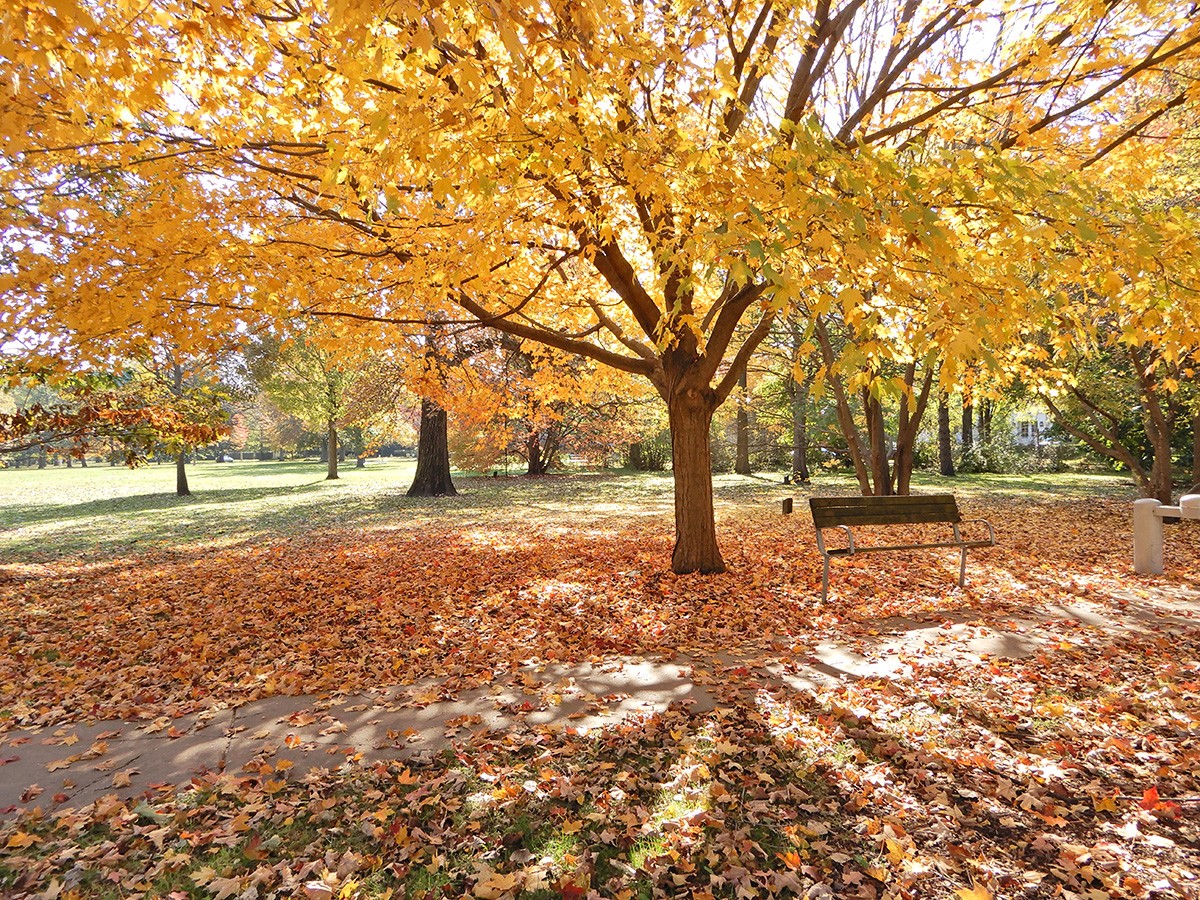
In more recent years however, the WPD has proposed projects that would have an adverse effect on the nationally significant historic designed landscape that has been described by landscape historian Julia S. Bachrach as, “remarkably intact and possessing an exceptionally high degree of integrity.” Confirming this significance, the park was approved by the Illinois Historic Sites Advisory Council in October 2023 and in May 2024, the Gillson Park and Wilmette Harbor Historic District was listed in the National Register of Historic Places.
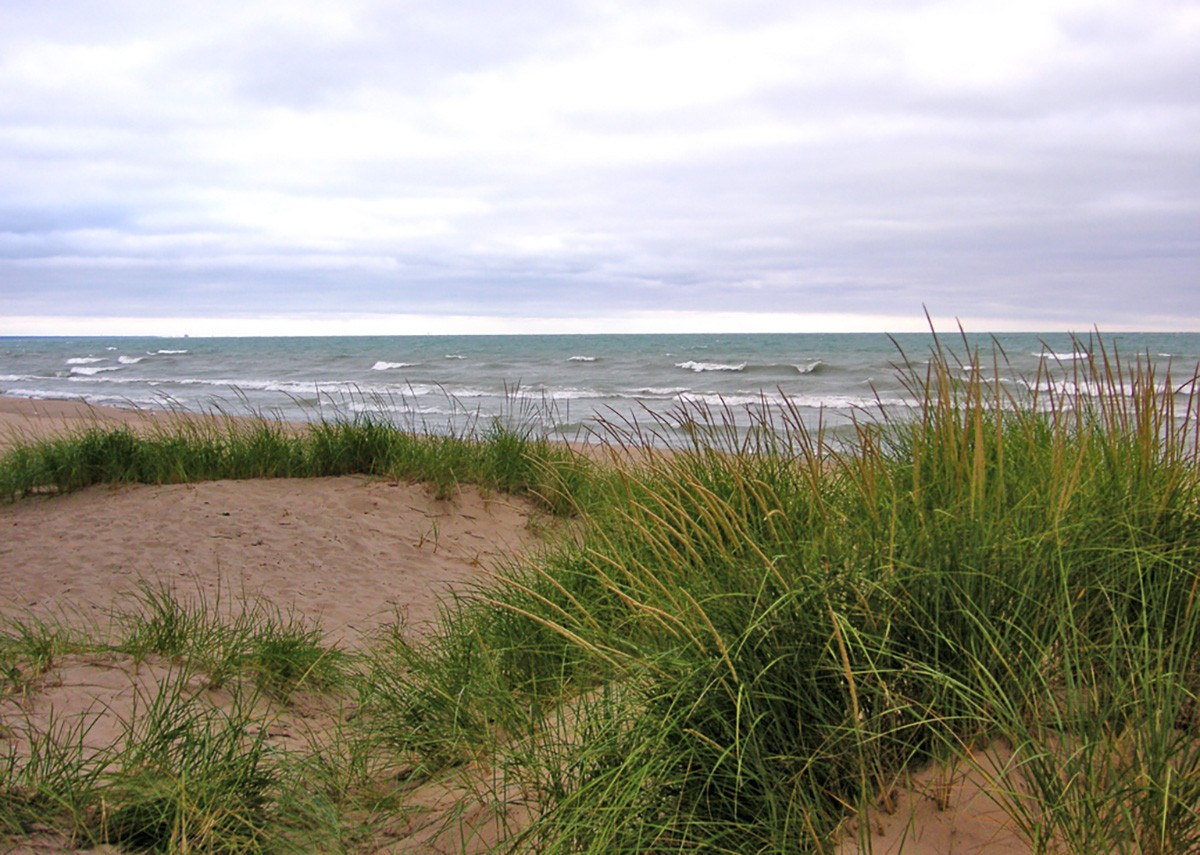
Threat
In 2024 the WPD issued a Request for Proposals (RFP) for road and sewer improvements along the historic Middle and Harbor Drives, noted in the National Register of Historic Places nomination as significant contributing character-defining features. When the Wilmette Park Board had begun considering these changes in 2022, Landmarks Illinois included Gillson Park’s landscape on its list of Most Endangered Historic Places in Illinois.
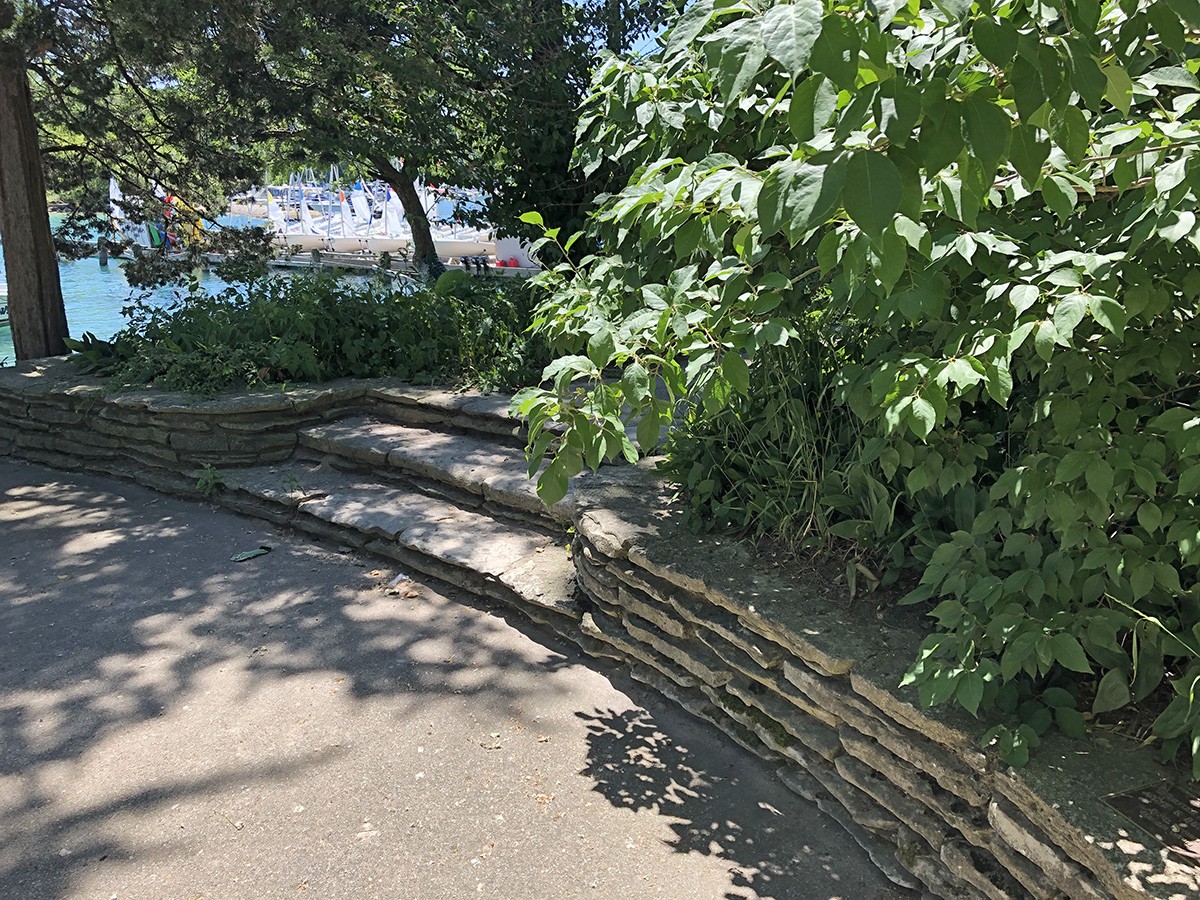
The current proposal aims to alter the historic road width by narrowing Middle Drive from twenty feet wide to seven feet wide, thus converting it to a narrow pedestrian pathway. WPD plans to alternatively widen Harbor Drive by five feet to accommodate a bike lane and sidewalk. The project will also require relocating sewer and electrical lines resulting in the construction of a 100-foot-long concrete wall along the north side of the road, likely impacting panoramic lakefront views. The proposal will not only modify the historic drives laid out by Gage, Everly, and Wagstaff, but will likely adversely impact mature deciduous trees, accelerating their decline, or even demise. In response to these proposals, in their quest to find a sympathetic solution, Keep Gilson Green (established in 2021) has proposed an alternative: a ten-foot-wide curvilinear path, once proposed by Everly and Wagstaff, (but never realized), would be introduced to accommodate contemporary needs, while honoring the park’s celebrated history, integrity, and significance.
What You Can Do
To advocate for the protection of Gilson Park’s character defining features and advocate for the development of an alternative path, send an email to the Wilmette Park District.
Share your thoughts on the Comprehensive Plans for Gillson Park by contacting the Park District board:
President: Kara Kosloskus - kkosloskus@wilpark.org
Vice President: Patrick Duffy - pduffy@wilpark.org
Board Members: Cecilia Clarke - cclarke@wilpark.org
Ali Frazier - afrazier@wilpark.org
Julia Goebel - jgoebel@wilpark.org
Patrick Lahey - plahey@wilpark.org
Mike Murdock - mmurdock@wilpark.org
Sample email (courtesy of Keep Gillson Green) to copy, paste and send:
Dear Commissioners:
I support the adoption of a roadway plan for Gillson Park that respects and honors the original historically significant design. Gillson’s landscape design was a conscious work of creation. It was carefully created almost one hundred years ago by respected Chicago landscape architects who understood Gillson’s topography, the tenets of excellent park planning, and the principles of Prairie School design. Remarkably, Gillson's original design remains intact and should remain so, as it reflects the Midwest’s unique contribution to the field of landscape architecture.
I respectfully request that the Park District preserve Gillson's historical design and not proceed with a roadway plan that changes and damages that design by narrowing Middle Drive, adding a long concrete retaining wall, and moving Harbor Drive off its original design. Please adopt a roadway plan that that keeps to and respects the original historic design.
Sincerely, Name Address



